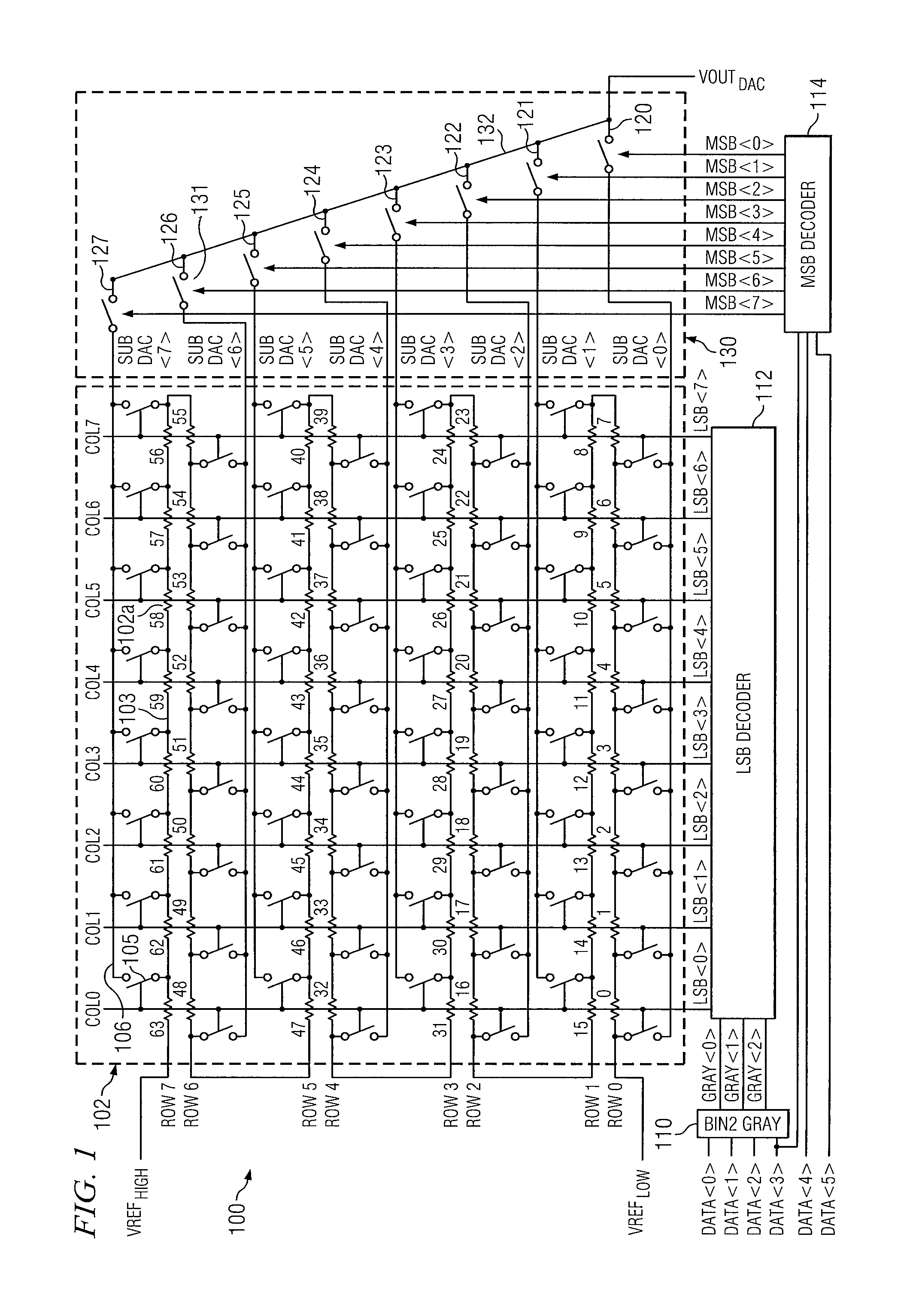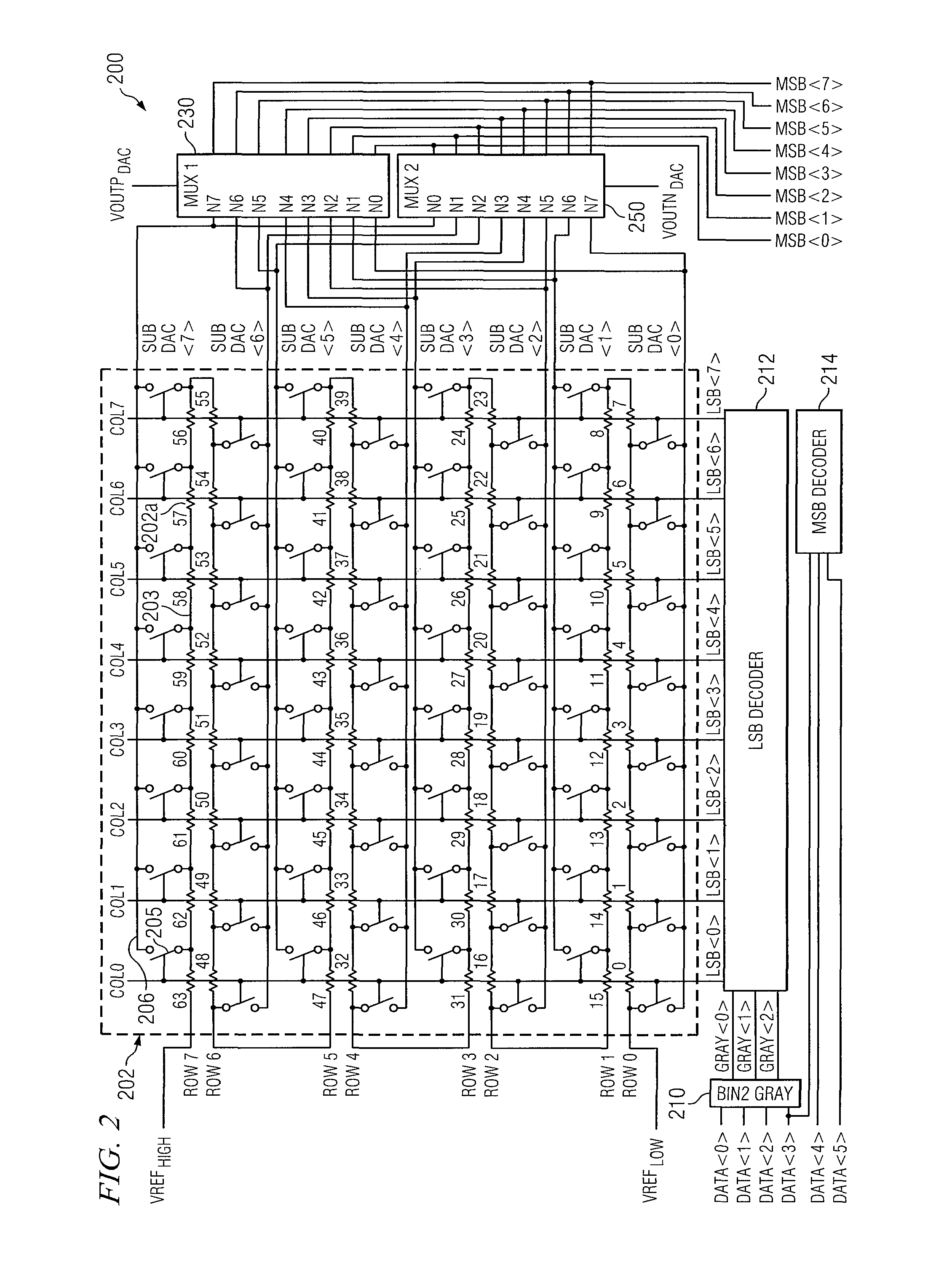Apparatus and method for simplifying Digital-to-Analog Converter circuitry using gray code
- Summary
- Abstract
- Description
- Claims
- Application Information
AI Technical Summary
Benefits of technology
Problems solved by technology
Method used
Image
Examples
Example
DETAILED DESCRIPTION OF THE DRAWINGS
[0014]One embodiment of the present disclosure provides a method for implementing the reflective nature of Gray code in a DAC circuit such that a single set of control signals can control the switches in both odd and even rows of a column, thereby eliminating additional routing components and reducing surface area and dynamic power used by the circuit.
[0015]Reference is made to FIG. 1, which illustrates an exemplary 6-bit resistor string DAC circuit 100. The circuit 100 includes a high reference voltage node VREFHIGH and a low reference voltage node VREFLOW. Connected to reference voltage nodes VREFHIGH and VREFLOW is a string of series-connected resistors 102. The string of resistors 102 is laid out in a zigzag pattern to form an array of eight rows and eight columns of resistors 102 such that the current in the odd rows flows in one direction, and the current in the even rows flows in the opposite direction. The eight rows of the array are numbe...
PUM
 Login to View More
Login to View More Abstract
Description
Claims
Application Information
 Login to View More
Login to View More - R&D
- Intellectual Property
- Life Sciences
- Materials
- Tech Scout
- Unparalleled Data Quality
- Higher Quality Content
- 60% Fewer Hallucinations
Browse by: Latest US Patents, China's latest patents, Technical Efficacy Thesaurus, Application Domain, Technology Topic, Popular Technical Reports.
© 2025 PatSnap. All rights reserved.Legal|Privacy policy|Modern Slavery Act Transparency Statement|Sitemap|About US| Contact US: help@patsnap.com



